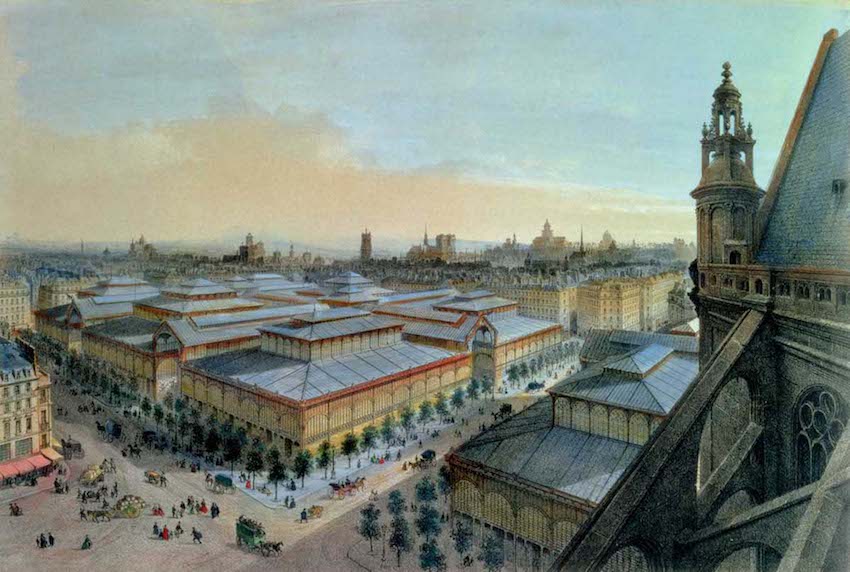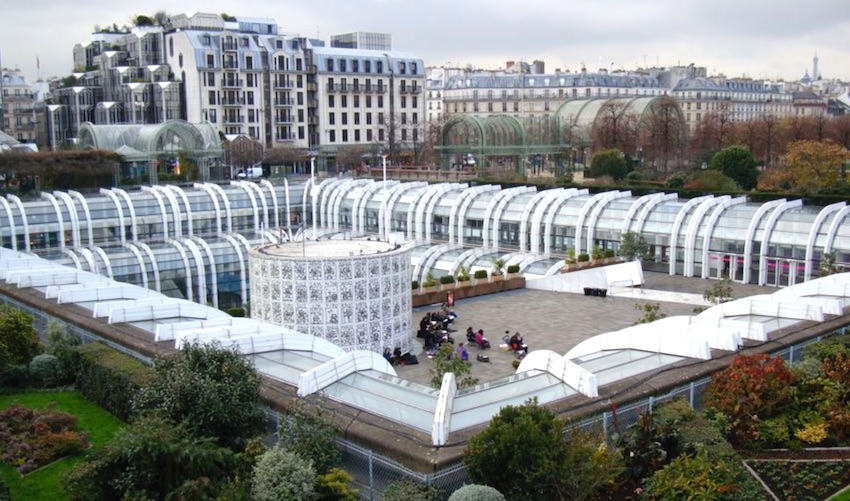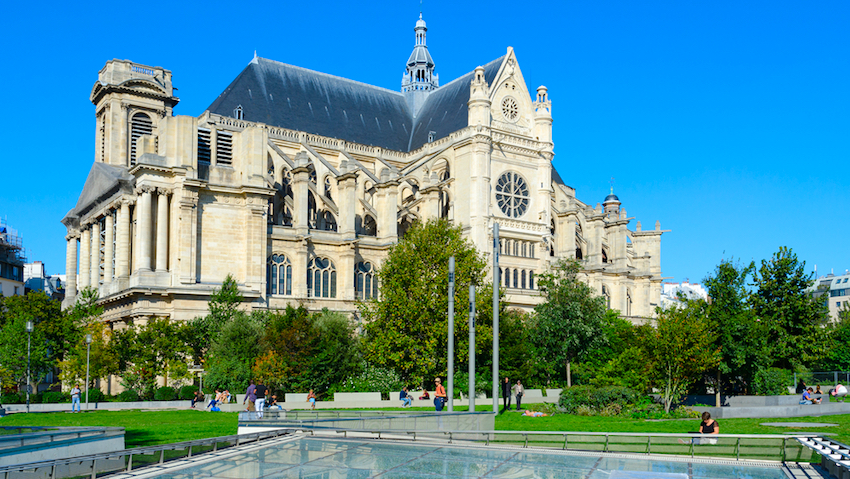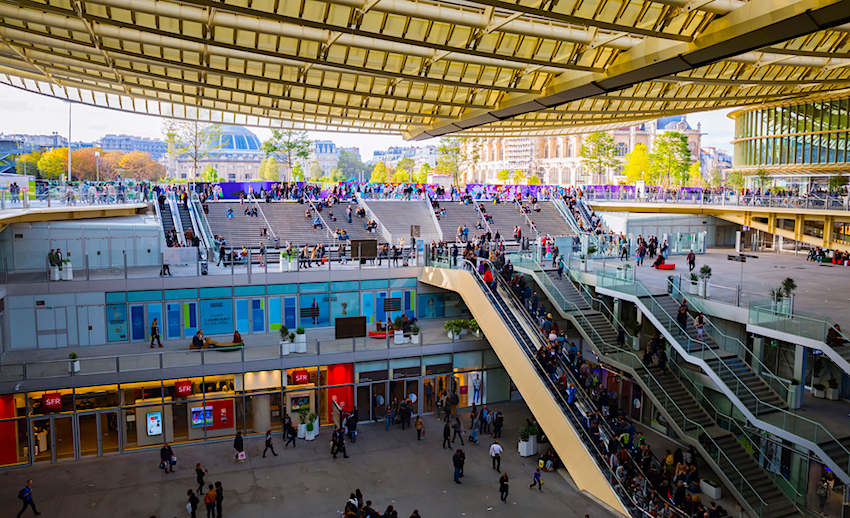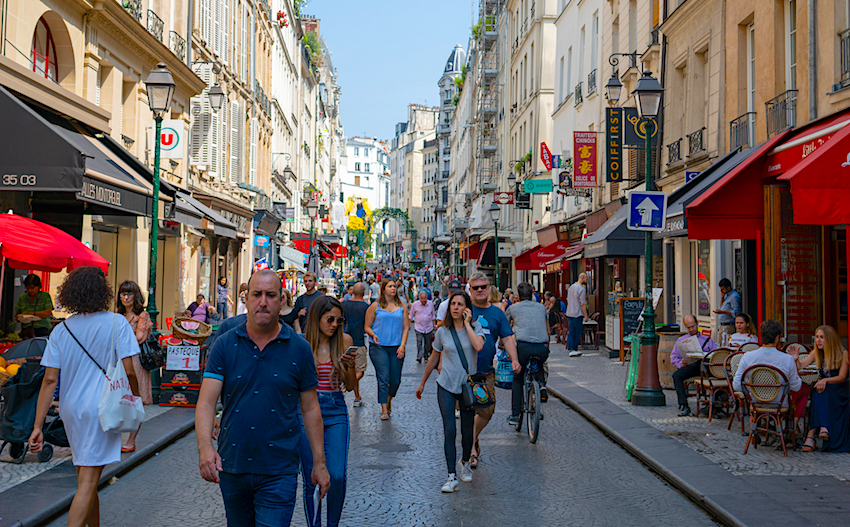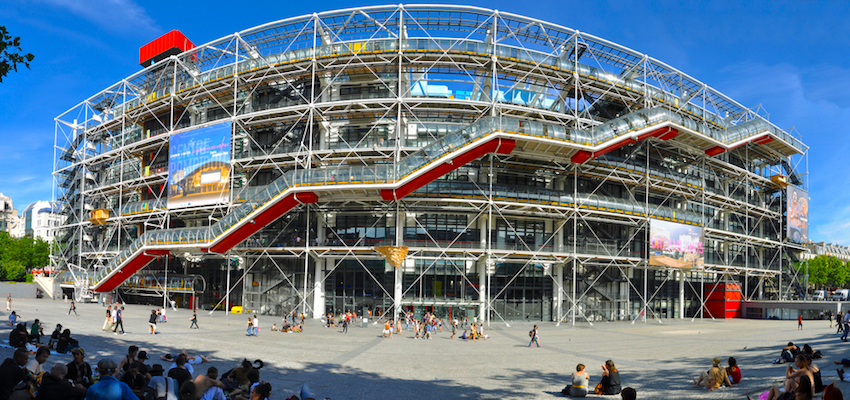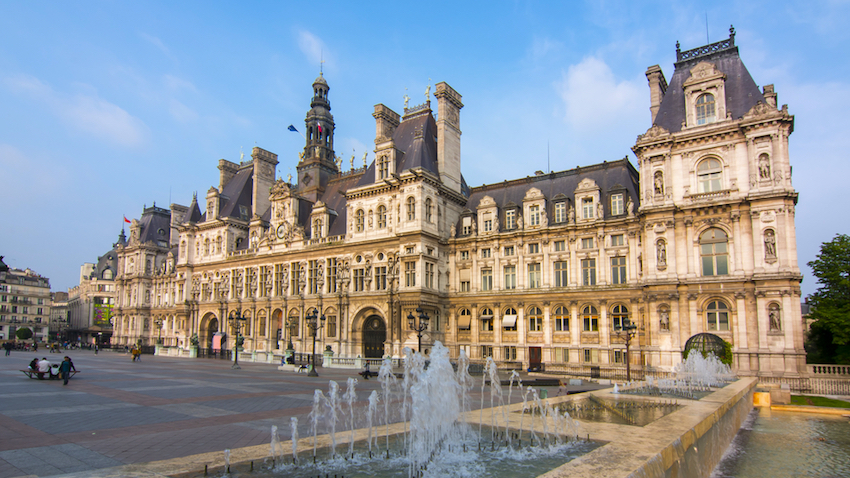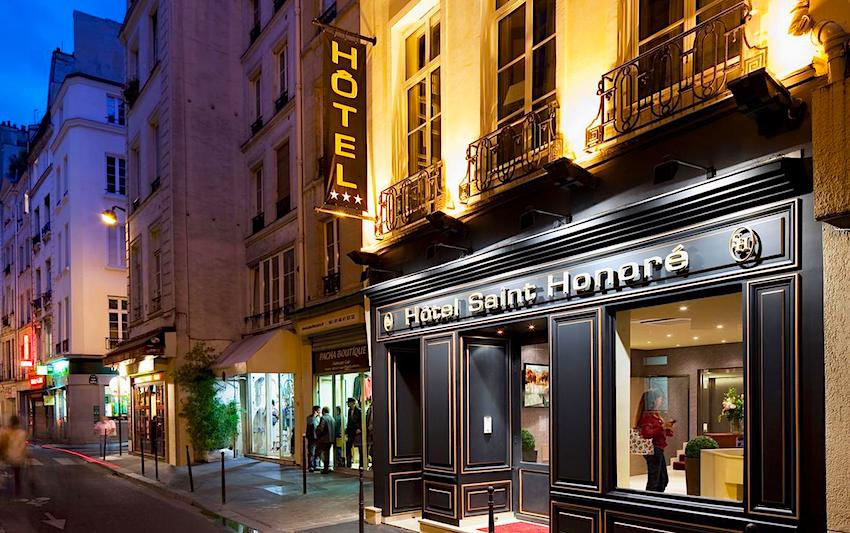Les Halles
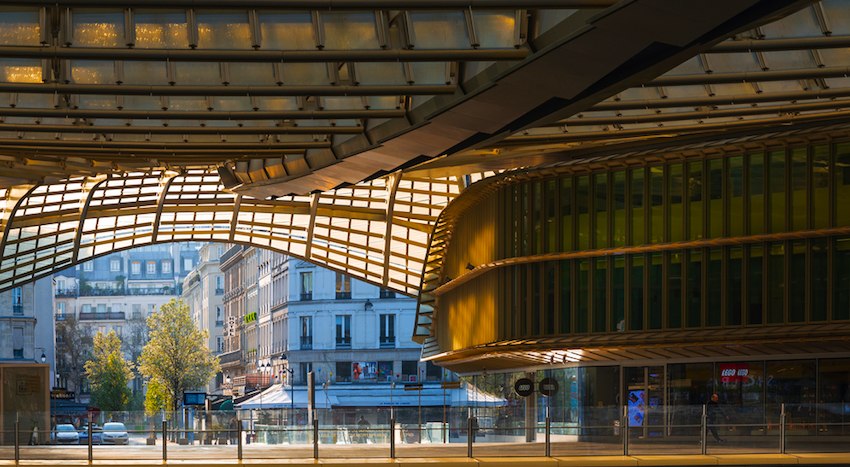
|
First of all the
pronunciation :
(Ley-all
) Try at your own risk because it is common
knowledge and scientific fact that you will never
speak French like the French do, even if they stop
grimacing or finishing your sentences for
you. Les
Halles, which
means what it sounds like, was one of the true
wonders of working class Paris. Made famous
by Emile
Zola’s famous
novel of the same name, it was nicknamed
“the
stomach” of
Paris for obvious reasons, as well as the scale of
it’s labyrinthine underground alleys selling fish,
meat and vegetables. The fresh food market has
always been the center and living focal point of a
city. Banks and creditors may run the show, but
everyone has to eat, and Les Halles was a monument
to the great tradition of western markets, and
retains mythical status in the minds of Parisians
and anyone else who was lucky enough to have
experienced it. |
|
For 800 years this glorious market was the hub of all food distribution in the city. The gigantic steel arches covered the main market area which sold vegetables during the day and was also used as a general meeting point for citizens of Paris. The steelwork was designed by the famed architect, Baltard , and was reminiscent of the support structures now visible in the Gare du Nord, and St. Lazare or better yet, the Musee d’Orsay. While the construction was considered practical by 19th and 20th century standards, the soaring beams with their paint-encrusted rivets and glass awnings have come to represent the fading beauty of the fin de siecle. The markets were most interesting at night when the meat and fish markets would go into full steam. Thousands of tons or meat and fish were bought, butchered, traded and sold in the middle of the night. (Painting by Felix Benoist) |
|
In the
1950’s It was in the Halles meat markets in the
wee hours that the Greek painter
NONDA
unrolled canvases and
painted using the blood of cow’s spleen and
charcoal as a solution to expensive materials. He
became known among the local fishmongers and
butchers who gave him fish to paint (and then eat)
as well as liver and spleen. Much later, the
spleen painting were to hang in gentrified private
collections and exhibitions far from the wild and
raucous bustle of the Halles. |
|
Sadly, the market’s success was the root of it’s own demise. The volume of traffic to and from the market began to cause serious bottlenecks in the city center and the site was earmarked for destruction in the 1960’s. The physical removal of the arcades left a gaping hole in the earth for many years which was eventually converted into the multi-story underground shopping mall and metro station we see today called the Forum Les Halles. The pavilion built on the site is now a garden that attempts to mimic certain features of the original site as well as Baltard’s architecture, but is mostly a pleasant pedestrian area. One of these halls still exists as a designated national monument called the Pavillon Baltard, located in Nogent-sur-Marne, a suburb of Paris, where it is used as a concert hall. (ZZ Top, Bob Marley, Iron Maiden, Thin Lizzy and UFO have played there). It is also the home of the Christie Organ, which came from the Gaumont Palace, Europe's biggest cinema located at the intersection of boulevard de Rochechouart and Place Clichy. With 6000 seats, the theater was originally built as the l’hippodrome de Montmartre for the 1900 World's Fair and turned into a movie theater in 1910 and survived until 1970. It was torn down in 1972 and replaced with a mall, just like Les Halles. The Organ was classified as an 'historic monument'. (You can read about the Gaumont Palace in the Paris Cinema Project.) |
|
Adjacent to the pavilion is the beautiful Gothic cathedral of St. Eustache. The church organ is world famous, the largest in France, and contains 8000 pipes! There is an interesting fountain there, occasional sculpture exhibitions and a lot of young pseudo gangsters milling around trying to sell hash or just look cool. The church which replaced a smaller church from the 13th century, was built between 1532 and 1632 and named for Saint Eustace, a Roman general of the second century AD who was burned, along with his family, for converting to Christianity. Since the fire at the Notre Dame Cathedral the Easter Mass has been moved here. |
|
The metro stop and shopping mall contain every modern shop imaginable, but there is a confusion to the layout, a million exits, masses of young hipsters and lots of policemen all crammed into an area that stimulates but tires--- it’s like an American mall on steroids, too much music blaring from too many shops, to many lights, too many colors, doors, escalators…call me a curmudgeon. However it is one of the most visited mall in France so somebody likes it. |
|
In the same vicinity there are many shops and outdoor stalls selling everything from CD’s to leather jackets. The area has become a little seedy, but not in a dangerous way, it just looks like a tame version of Times Square minus the lights. In the summer there are good street performers who occupy the main area in front of the museum, as well as skateboarders, musicians, mimes, protest groups, portraitists,drunks, hobos etc. |
|
There is of course the famous museum of modern art, the Centre Pompidou which looks like some kind of giant chain superstore from the future, and reminds me of the movie Brazil. Nearby is the bizarre and controversial fountains called Homage to Stravinsky designed by Jean Tingley (Kids always LOVE this fountain) Another much overlooked site which is invisible because it’s underground is Brancusi’s Studio. You can buy a ticket from the Pompido and visit the recreated workshop of the great sculptor. It’s worth it. |
|
From the Pompidou Center you can walk toward the Hotel de
Ville, the City Hall of Paris, and
then across the river to the
Notre Dame
Cathedral, or
if you are feeling sick of grand architecture and
broad boulevards, walk back to the
St.
Eustache and
cross Rue
Montmartre until
you find the
Rue
Montorgueil.
This is a wonderful little street filled with
shops, cafes and restaurants. I recommend it. Stefanos Papadopoulos Hotels |
|
There are a number of hotels in the neighborhood and this is one of the best areas to stay in because of its proximity to the Louvre and so many of the places you will want to see and the many restaurants and bars in Les Halles and the Marais. Try the 3-star Citadines Apart'hotel Les Halles, the Grand Hôtel Dechampaigne or the magnificent 18th-century 4-star Hotel L'Empire Paris nestled between the Louvre Museum and Les Halles. Located in a pedestrian street, Hôtel Le Relais des Halles offers individually decorated rooms with free Wi-Fi access and an antique-style décor. The Hotel Saint Honore is located on the Rue Saint Honoré and has air-conditioned and soundproofed rooms with free WiFi access. |
Help Support Matt's Paris Guide
Do you enjoy using my site? Have you found it entertaining as well as useful? If so please show your appreciation by booking hotels through the links found on my Hotels Page. The small commission I make on the bookings enable me to keep working and in most cases you won't find them any cheaper by searching elsewhere. You can
also book at Booking.com's Paris Page and they give me a small percentage on each booking. If you are appreciative of all the free information you
get on my websites you can send a donation through Paypal.

